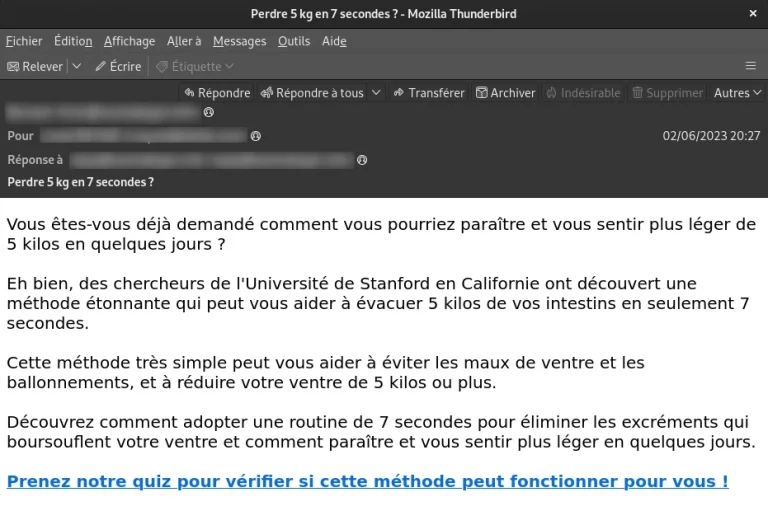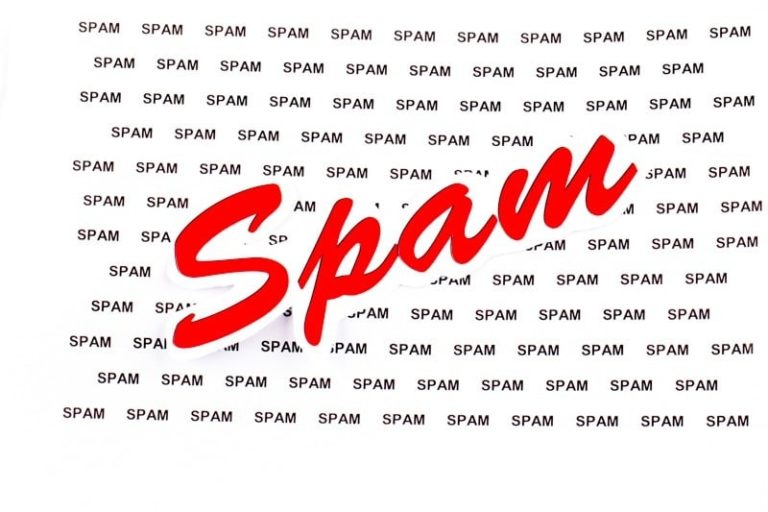Spam glossary: Anti-spam, spam and its derivatives
Definition of spam
Spam is an Internet canvassing technique involving the mass distribution by e-mail of information, often of an advertising nature, unsolicited by the recipient Internet users. We consider as spam all emails that do not comply with the Law for Confidence in the Digital Economy (LEN) of 22 June 2004, supplemented by the interpretative clarifications defined by the CNIL at its meeting of 17 February 2005.
The definition of spam is different for private and professional mailboxes. For private individuals, an email is considered to be spam if the sender has not obtained the consent of the owner of the email address through opt-in. This is much less clear-cut for business email addresses, where the difference between spam and commercial canvassing is sometimes tenuous. The French Data Protection Authority (CNIL) considers that an email sent via the Internet to a professional electronic mailbox, without prior consent, is not considered to be spam if the message is sent by virtue of the position held by the person, in a private or public organisation, who allocated the email address.
What is the difference between spam, phishing and scam?
Phishing and scam are forms of spam. Simple spam is often aimed at selling a product. Phishing or scam falls into the category of fraudulent computer messages. In this case, the email is an attempt to recover a person’s data, such as a code, identifiers or bank details. This type of message will encourage the user to visit fraudulent forms, or contain an attachment that is, in fact, a virus. The sender’s mailbox may itself have been hacked by spammers, who use it to send apparently secure e-mails.
How do you combat spam?
If the message is a newsletter, it is very difficult to know whether you have given your consent or whether your data is being misused. Tell the sender that the message is unwanted by clicking on the unsubscribe link, which is usually at the bottom of the page. Do this systematically and your inbox should gradually empty.
If the message does not have an unsubscribe link, you can report it as spam or put it in your junk mail folder. This will train your e-mail and make it more intelligent. Reporting messages as soon as they are received by recipients is a crucial step in the fight against spam containing suspicious links or content.
When it comes to corporate security against cyber attacks, it is essential to have an email protection service like Altospam.com. This will filter spam (phishing, scam, malware) as well as viruses and attempts to hack into your data, sites or users.
How can I protect my business against spam?
In France, the lack of IT protection for business emails is the number one vector for corporate hacking. IT service managers, security officers or management can subscribe to online IT security services such as Altospam to increase the level of protection and filtering. The implementation of a protocol for rapid reporting of suspicious e-mail as soon as it is received, with a guide and documentation in French and English, facilitates the user experience and helps to improve awareness of threats coming from the web.
Why am I getting lots of spam?
Spammers collect email addresses from the web on a massive scale in order to send their advertising or phishing attempts. Your email may have been shared on databases, seen on forums or resold after registration on harmless sites or in competition games.
If you receive an email like this, you should never click on it or reply to the spammers. They will identify you as active and send you even more emails. By filtering messages upstream, outsourced anti-spam solutions discourage spammers, who then see you as a “cold” target. What’s more, by systematically reporting any unwanted e-mail received via the Internet to these specialist services, you are more likely to react quickly and have it taken into account.
Origin of the word spam, etymology and a brief history of spam:
Various more or less authorised theories attempt to define the etymology of the term spam, going back in history to the pre-war period!
In 1937, an American food manufacturer named a tin of pork SPAM, an acronym for “Spiced Porc And Meat”. In the 70s, Monty Python’s Flying Circus series exhumed the word spam in an anthology scene in which diners reading the menu began chanting the word SPAM until their noise drowned out all conversation.
20 years later, the first script written in the Perl language appeared, flooding the ancestors of today’s forums with unsolicited advertising messages. An irritated user used the word “spam” to describe the intruding messages. This was the origin of the word spam as we know it today, when it was first used to describe a mass mailing of unwanted advertising pollution. Our Canadian friends prefer the highly appropriate term “pourriel”, which is a contraction of “pourri” and “courriel”.
Today, this definition is mainly used in France to designate unwanted and unsolicited emails, whether they be phishing attempts, virus mailings or simply messages with suspicious content.
Example
Example of spam, unsolicited advertising.

Invaded by spam?
On average, teams spend a third of their weekly time managing spam. With Altospam’s Mailsafe solution, this time is reduced by 40%. We offer a free 15-day analysis of your mailbox.





